In today’s health-conscious world, many people are looking for ways to reduce their sugar intake while still enjoying the nutritional benefits of fruits. While all fruits contain natural sugars, some are lower in sugar content than others, making them excellent choices for those watching their carbohydrate intake or managing conditions like diabetes. Whether you’re aiming for a low-carb diet or simply trying to maintain balanced blood sugar levels, incorporating the “best low-carb fruits: 15 healthy options for a balanced diet” can be both enjoyable and beneficial. Maintaining balanced blood sugar levels is crucial, and avoiding certain foods can further help in managing healthy uric acid levels. Learn more about foods to avoid for healthy uric acid levels here.
The Importance of Choosing Low-Sugar Fruits
Dr. Emily Parker, RDN, explains, “Opting for low-sugar fruits can help manage blood sugar levels, which is particularly important for individuals with diabetes or those trying to lose weight. These fruits provide essential nutrients without causing significant spikes in blood glucose.”
Moreover, low-sugar fruits can be an excellent choice for those following low-carb or ketogenic diets. Nutritionist Mark Thompson, PhD, RD, adds, “Many of these low-sugar fruits, especially berries, can be incorporated into low-carb diets in moderation, allowing individuals to enjoy the nutritional benefits of fruit while maintaining their dietary goals.”
Let’s explore 15 low-sugar fruits that you should consider incorporating into your diet, along with their health benefits and delicious ways to enjoy them.
1. Strawberries

Strawberries are not only delicious but also surprisingly low in sugar. With only about 7 grams of sugar per cup, these vibrant berries are a favorite among dietitians. Strawberries, with their bright red color and juicy texture, are a staple in many households. These berries are packed with vitamins, minerals, and antioxidants that can boost your overall health. Their sweet yet slightly tart flavor makes them a versatile ingredient in both sweet and savory dishes.
Benefits:
- Rich in vitamin C, which supports immune health.
- High in antioxidants, particularly anthocyanins, that help combat oxidative stress.
- A good source of fiber, aiding in digestion and satiety.
Usage: Strawberries are versatile and can be added to yogurt, oatmeal, or eaten as a snack. They’re also great in salads for a touch of sweetness without the overwhelming sugar content.
2. Raspberries

Raspberries are another berry that’s low in sugar but high in nutrition. With approximately 5 grams of sugar per cup, they’re an excellent choice for those watching their sugar intake. Raspberries, known for their unique structure of drupelets, are a powerhouse of nutrition. Their vibrant red color is due to the presence of anthocyanins, which have numerous health benefits. The combination of their tartness and slight sweetness makes them perfect for various culinary uses.
Benefits:
- High in fiber (8 grams per cup), supporting digestive health.
- Rich in vitamin C and manganese, they are important for immune function and bone health.
- Contains ellagic acid, a compound with potential anti-cancer properties.
Usage: Add raspberries to your morning smoothie or sprinkle them over a salad for added texture and flavor.
3. Blackberries

Blackberries pack a nutritional punch with only about 7 grams of sugar per cup. These, which are often found in the wild, are not only tasty but also nutritional powerhouses. Their deep purple color is indicative of their high antioxidant content. These berries are a great addition to a healthy diet, providing a range of vitamins and minerals that support overall health.
Benefits:
- High in fiber, aiding digestion.
- Rich in vitamins C and K, supporting immune and bone health.
- Contains antioxidants that may help reduce inflammation.
Usage: Blackberries are great for snacking or can be used to make a low-sugar jam alternative.
4. Kiwi

Kiwi fruit is a tangy, low-sugar option with approximately 6 grams of sugar per medium fruit. With its fuzzy brown skin and bright green flesh, it is a tropical delight. This small fruit is surprisingly nutrient-dense, offering a high dose of vitamin C. The unique combination of its tart and sweet flavors makes it a refreshing choice for snacks and desserts.
Benefits:
- High in vitamin C (more than an orange), boosting the immune system.
- A good source of fiber and potassium, important for heart health.
- Contains actinidin, an enzyme that aids digestion.
Usage: Slice kiwi into fruit salads or eat it on its own for a quick low-sugar snack.
5. Grapefruit

Grapefruit is known for its tart flavor and low sugar content, with about 8 grams of sugar in half a medium fruit. With its tangy and slightly bitter taste, it is a citrus fruit that stands out for its low sugar content. Available in various colors, from pink to ruby red, grapefruit is a refreshing and hydrating fruit that can be enjoyed in many forms, from juices to salads.
Benefits:
- High in vitamin C and antioxidants, supporting immune health.
- May help lower insulin levels and improve insulin sensitivity.
- Contains naringin, a flavonoid with potential anti-inflammatory properties.
Usage: Grapefruit can be a refreshing breakfast option or added to salads for a citrusy kick.
6. Avocado

While often thought of as a vegetable, avocado is technically a fruit and is one of the lowest in sugar content. Avocado, though often mistaken for a vegetable, is a creamy, nutrient-rich fruit. Its smooth, buttery texture and mild flavor make it a versatile addition to many dishes. Avocado is unique among fruits for its high content of healthy fats, making it a staple in heart-healthy diets.
Benefits:
- Rich in healthy monounsaturated fats, it is beneficial for heart health.
- High in fiber and potassium, supporting digestive and heart health.
- Contains lutein, an antioxidant beneficial for eye health.
Usage: Use avocado as a spread on toast, add it to salads, or make guacamole for a nutritious, low-sugar snack.
7. Cantaloupe

Cantaloupe is a sweet melon that’s relatively low in sugar, with about 8 grams per 100 grams of fruit. It is a type of melon with orange flesh, is known for its sweet and juicy flavor. This refreshing fruit is often enjoyed in the summer and is packed with water, making it a hydrating choice. Its high vitamin content makes it a nutritious option for snacks and meals.
Benefits:
- High in vitamins A and C, supporting skin and immune health.
- A good source of potassium, important for heart health.
- Contains beta-carotene, which supports eye health.
Usage: Enjoy cantaloupe on its own, in fruit salads, or blend it into a refreshing summer smoothie.
8. Peaches
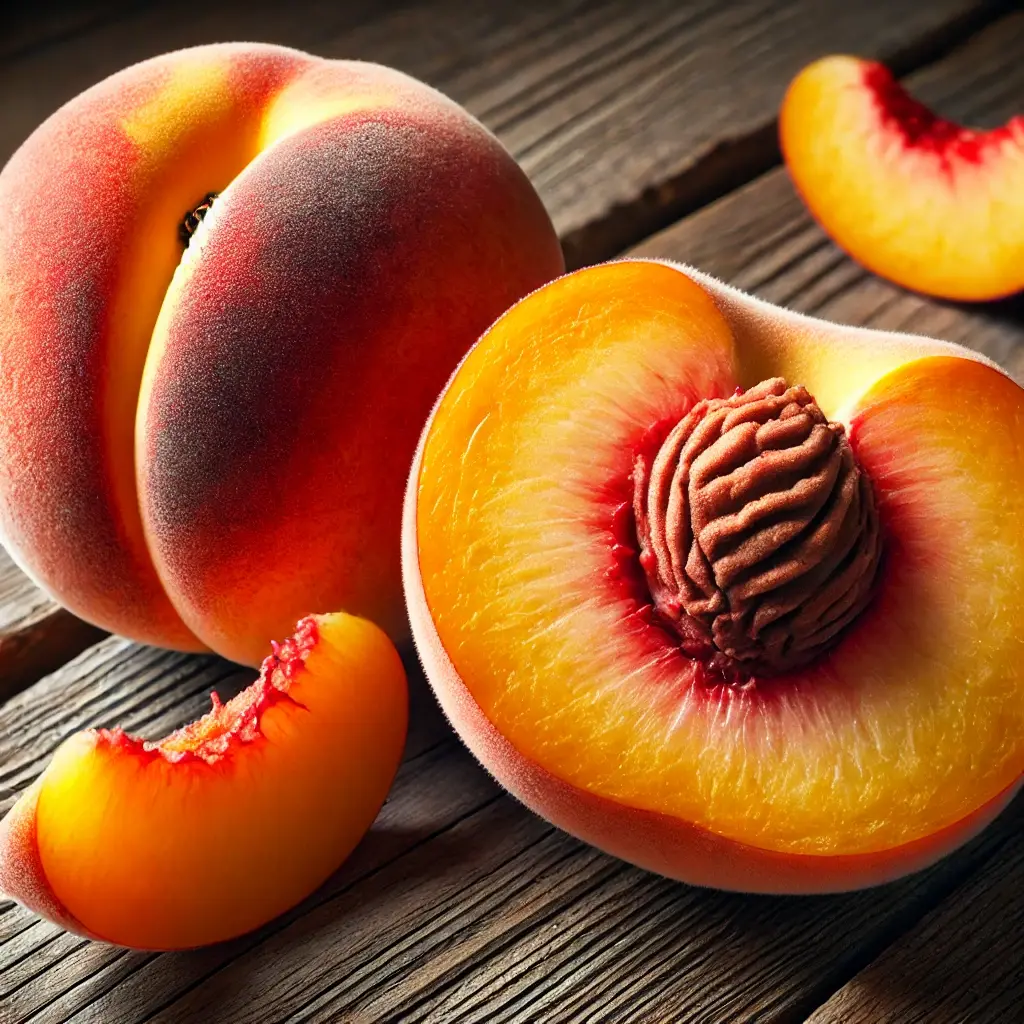
Peaches have a moderate sugar content, with about 13 grams per medium fruit, but their fiber content helps slow sugar absorption. With their fuzzy skin and juicy flesh, they are a symbol of summer. These stone fruits come in various varieties, each offering a unique balance of sweetness and tartness. Peaches are not only delicious but also packed with essential nutrients that support overall health.
Benefits:
- A good source of vitamins A and C supports skin and immune health.
- Contains antioxidants like chlorogenic acid, which has anti-inflammatory properties.
- May help improve digestion and reduce inflammation.
Usage: Grilled peaches make a delicious low-sugar dessert option.
9. Oranges

While oranges do contain sugar, their high fiber content makes them a good low-sugar option, with about 12 grams of sugar per medium fruit. Oranges, one of the most popular citrus fruits, are known for their bright color and refreshing taste. Available year-round, oranges are a staple in many diets due to their versatility and health benefits. They can be enjoyed fresh, juiced, or as an ingredient in various dishes.
Benefits:
- Excellent source of vitamin C, supporting immune health.
- Contains flavonoids that may help reduce the risk of heart disease.
- A good source of thiamine and folate, supporting energy metabolism and cell health.
Usage: Enjoy oranges as a snack or add segments to salads for a burst of citrus flavor.
10. Papaya

Papaya is a tropical fruit with a moderate sugar content of about 8 grams per 100 grams. With its vibrant orange flesh and sweet flavor, it’s a tropical fruit that’s rich in nutrients. Its soft texture and natural sweetness make it a favorite in many tropical cuisines. Papaya is also known for its digestive benefits, making it a healthy addition to any diet.
Benefits:
- Rich in vitamins A and C, it supports skin and immune health.
- Contains papain, an enzyme that aids digestion.
- May help reduce inflammation and support heart health.
Usage: Papaya can be a great addition to smoothie bowls or eaten on its own as a refreshing snack.
11. Guava
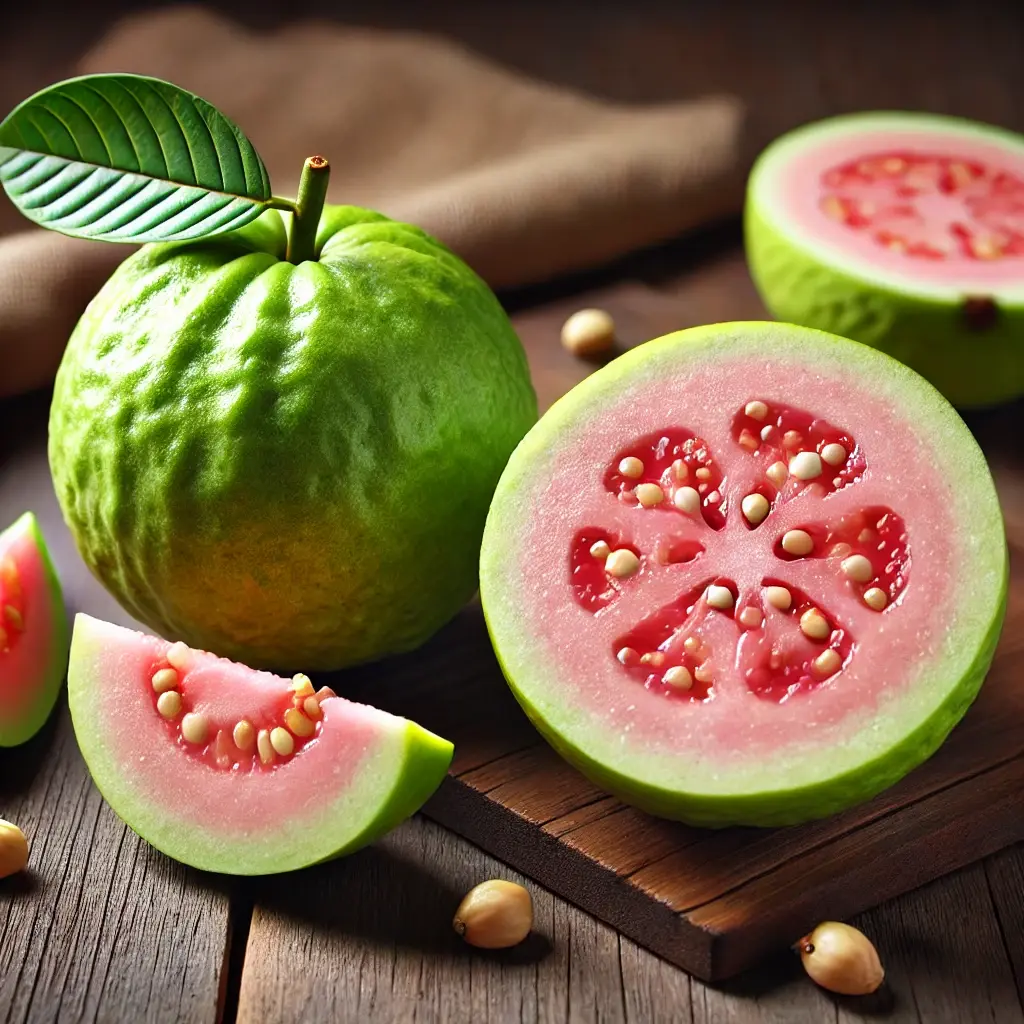
Guava is a tropical fruit with a relatively low sugar content, containing about 9 grams of sugar per 100 grams. This is a tropical fruit with a unique flavor profile, is both sweet and slightly tart. It comes in various varieties, each with different colors and flavors. Guava is a versatile fruit that can be enjoyed fresh, cooked, or as an ingredient in various dishes
Benefits:
- High in vitamin C and lycopene, which support skin and heart health.
- Good source of fiber, aiding digestion.
- May help lower blood sugar levels.
Usage: Eat guava fresh or add it to smoothies for a tropical twist.
12. Apricots
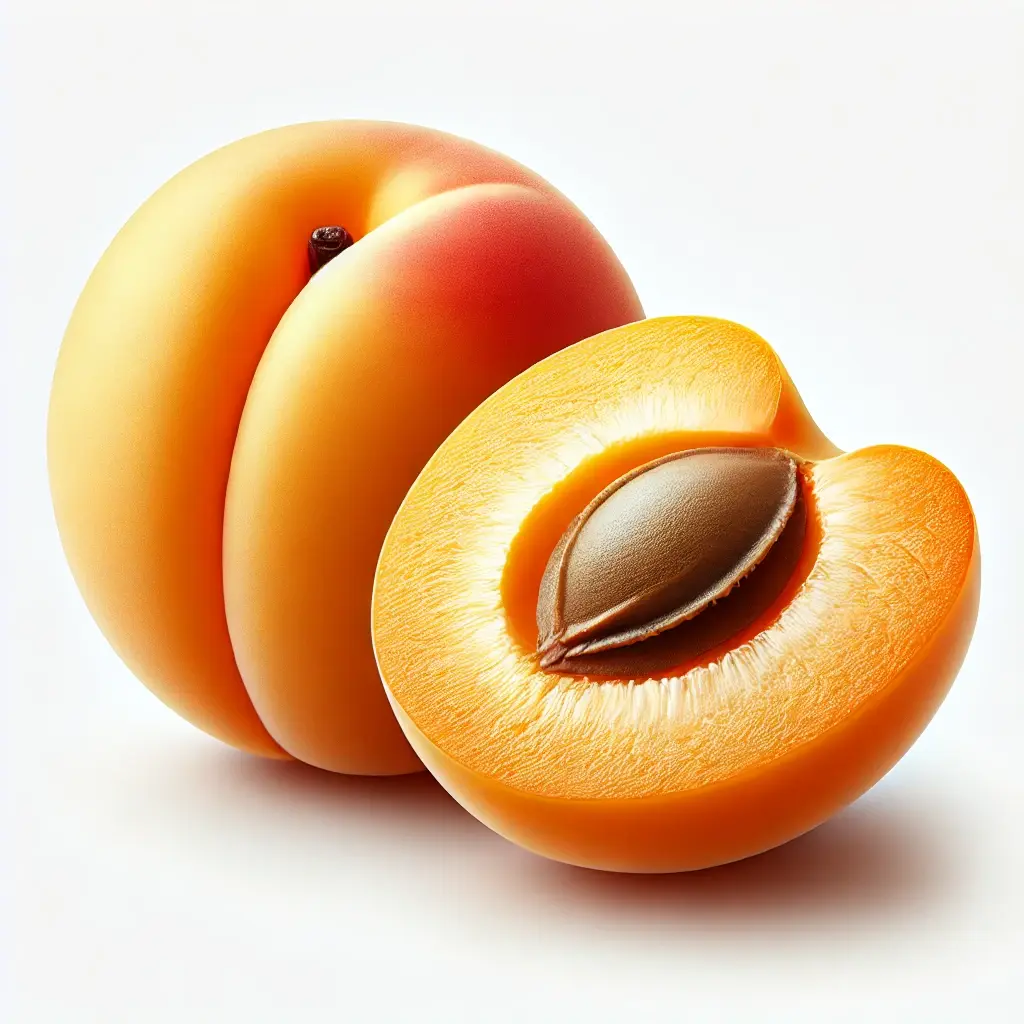
Apricots are stone fruits with a moderate sugar content, containing about 9 grams of sugar per 100 grams. With their smooth skin and sweet flesh, they are a delicious and nutritious fruit. These small stone fruits are packed with vitamins and minerals that support overall health. Apricots can be enjoyed fresh, dried, or as an ingredient in various recipes.
Benefits:
- Rich in vitamins A and C, it supports skin and immune health.
- A good source of potassium and fiber, aiding heart health and digestion.
- Contains antioxidants that may support eye health.
Usage: Enjoy fresh apricots as a snack or add dried apricots (in moderation) to trail mix.
13. Plums
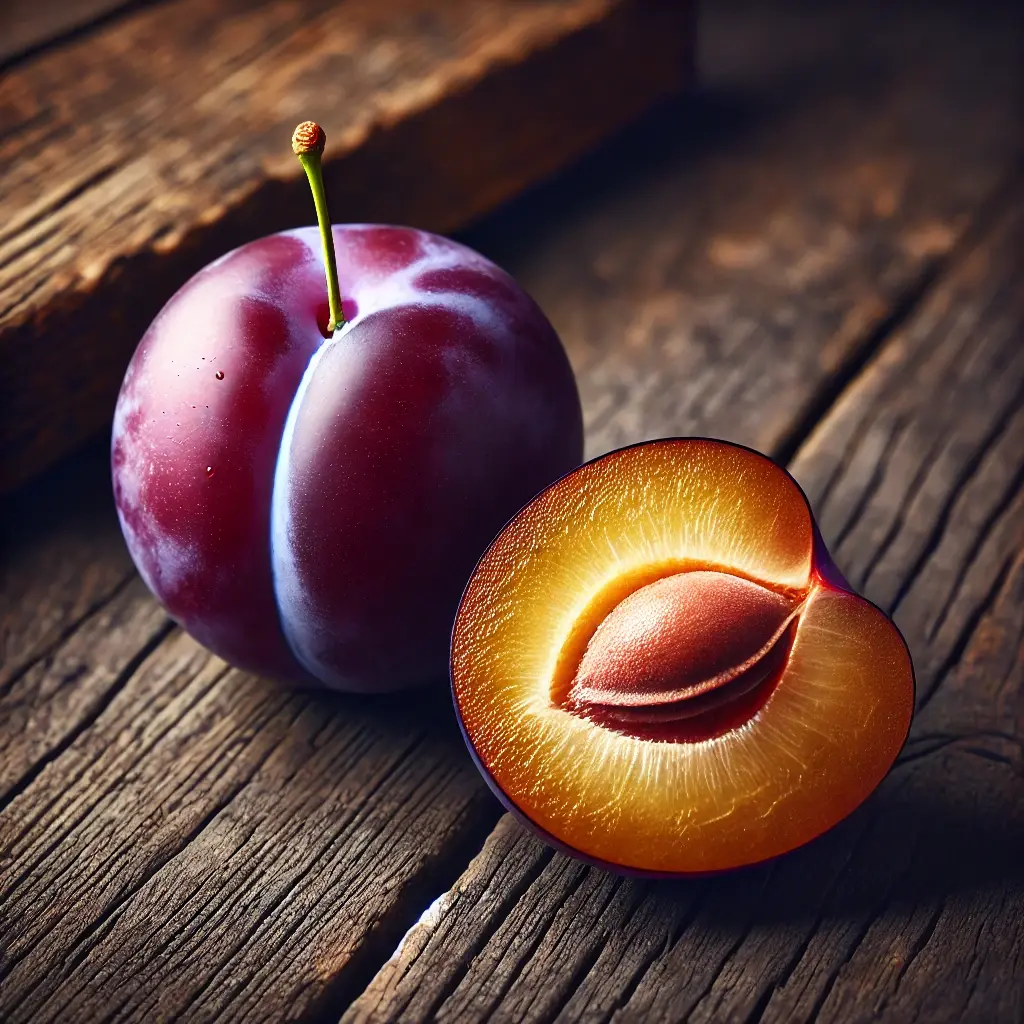
Plums have a moderate sugar content, with about 11 grams per 100 grams, but their high fiber content helps slow sugar absorption. Known for their smooth skin and juicy flesh, they come in various colors and flavors. These stone fruits are a delicious and nutritious addition to any diet. Plums are not only tasty but also offer a range of health benefits, making them a great choice for snacks and desserts.
Benefits:
- A good source of vitamins C and K, supports immune and bone health.
- Contains antioxidants that may help reduce inflammation.
- May help improve bone health.
Usage: Plums can be a great addition to salads or eaten as a refreshing snack.
14. Watermelon
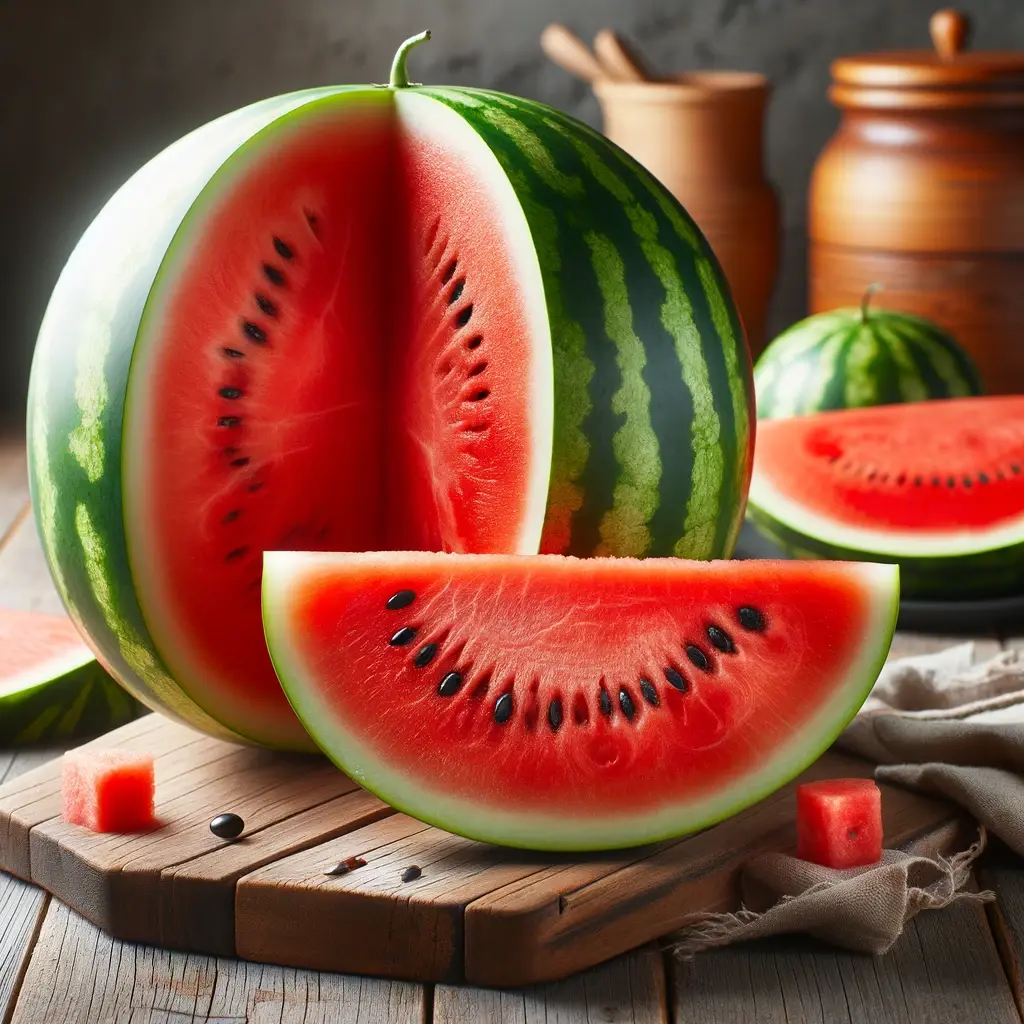
While watermelon tastes sweet, it’s relatively low in sugar, with about 6 grams per 100 grams. Watermelon, a summer favorite, is known for its refreshing and hydrating properties. This large fruit, with its sweet, juicy flesh, is a staple at picnics and barbecues. Watermelon is not only delicious but also packed with nutrients that support overall health.
Benefits:
- High water content (92% water), helping with hydration.
- Contains lycopene, an antioxidant that may reduce the risk of certain cancers.
- A good source of vitamins A and C supports skin and immune health.
Usage: Enjoy watermelon on its own, in fruit salads, or blend it into a refreshing summer drink.
15. Asian Pears

Asian pears are crisp fruits with a lower sugar content compared to other pear varieties, containing about 9 grams of sugar per 100 grams. They are, also known as apple pears, are known for their crisp texture and sweet flavor. These unique fruits combine the best qualities of apples and pears, offering a refreshing and hydrating option. Asian pears are a delicious and nutritious choice for snacks and meals.
Benefits:
- High in fiber, aiding digestion.
- A good source of vitamin K and copper, supporting bone health and metabolism.
- Contains antioxidants that may support heart health.
Usage: Asian pears can be a great addition to salads or eaten as a crunchy, low-sugar snack.
Incorporating Low-Sugar Fruits into Your Diet
While these fruits are lower in sugar compared to others, it’s important to remember that they still contain natural sugars and should be consumed in moderation as part of a balanced diet. Here are some tips for incorporating these low-sugar fruits into your daily routine:
1. Start your day right: Add berries to your morning oatmeal or yogurt for a nutrient-packed breakfast.
2. Snack smart: Keep cut-up fruits like cantaloupe or Asian pears in the fridge for easy, low-sugar snacking.
3. Enhance your salads: Toss in some strawberries, blackberries, or grapefruit segments to add flavor and nutrition to your salads.
4. Blend it up: Make low-sugar smoothies using a combination of these fruits and leafy greens.
5. Dessert alternative: Grill peaches or enjoy a bowl of mixed berries for a healthier dessert option.
6. Hydrate creatively: Infuse water with slices of strawberries, kiwi, or watermelon for a refreshing, low-sugar drink.
Conclusion
Incorporating a variety of low-sugar fruits into your diet can provide numerous health benefits while helping to manage your sugar intake. From the antioxidant-rich berries to the refreshing citrus fruits, there are plenty of delicious options to choose from. Remember to enjoy these fruits as part of a balanced diet and consult with a registered dietitian or healthcare provider if you have specific dietary concerns or health conditions.
By making informed choices about the fruits you consume, you can satisfy your sweet tooth, boost your nutrient intake, and support your overall health goals. So why not start exploring these low-sugar fruits today and discover new ways to enjoy nature’s sweet treats?
References:
1. Johnson, S. et al. (2022). “The Role of Low-Sugar Fruits in Diabetes Management.” Journal of Nutrition and Dietetics, 45(3), 267–280.
2. Parker, E. & Brown, D. (2023). “Antioxidant Properties of Berries and Their Potential Health Benefits.” Nutrients, 15(2), 412-425.
3. Lee, R. & Chen, L. (2021). “The Impact of Fruit Consumption on Blood Sugar Levels: A Systematic Review.” Diabetes Care, 44(8), 1789–1801.
4. Thompson, M. et al. (2023). “Low-Sugar Fruits in the Context of Low-Carbohydrate Diets: A Review.” Current Nutrition Reports, 12(1), 56–69.
5. United States Department of Agriculture. (2023). FoodData Central. Retrieved from https://fdc.nal.usda.gov/






